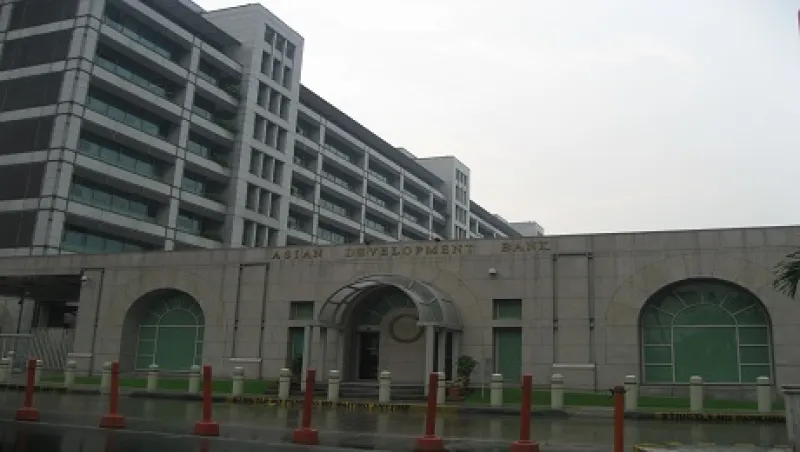Haruhiko Kuroda may have left the Asian Development Bank, but the man and his policies overshadowed the ADB’s annual meeting, which concluded Sunday in New Delhi.
Kuroda headed the development bank for eight years before leaving in March to become governor of the Bank of Japan, where he has initiated an unprecedented program of quantitative easing. The impact of a surge in liquidity from Japan on the rest of Asia was a major topic of discussion at the meeting, which gathered Finance ministers and central bankers from the ADB’s 67 member countries.
“The quantitative easing, or unconventional monetary expansion — it is needed to support the growth of those countries to get out of deflation, to stabilize the system,” Nakao, 57, a former Japanese vice Finance minister in charge of international affairs, said at a news conference at the end of the four-day meeting. “The easing across the globe is needed. It continues to stabilize growth of the global economy, including the emerging markets, but at the same time, it is true we should be mindful of the negative spillovers from the QE and others effects from advanced economies to the emerging economies.”
Other officials warned that Japan’s policies, combined with similar aggressive easing moves by central banks in the U.S. and Europe, could destabilize markets across Asia by flooding them with liquidity.
More than $1.5 trillion is expected to flow into emerging-markets economies in Asia in the coming three years, Governor Amando Tetangco of the Philippine central bank said during a panel discussion on capital flows.
“Capital flows carry with them certain risks,” he said. “First, they lead to easy financing, which leads to strong credit growth and asset inflation. Second, they carry risk, as part of these funds are relegated to shadow banking. The third risk is a reversal of flows.” Although capital is flowing strongly from developed to emerging-markets economies at the moment, Tetangco said Asian countries couldn’t count on that continuing indefinitely. “In the longer term, emerging-markets economies must be prepared for the reversal of these flows,” he said.
The challenge for the Philippines and other countries is to see that inflows are channeled into sustainable long-term investments, Tetangco said. “We need to be able to transform this into financing, to increase the absorption ability of the economy,” he said. “There is a timing mismatch. Portfolio flows can happen very fast, but utilizing these flows can take time.”
Kuroda, who attended the meeting as BOJ governor, said in interviews that the BOJ’s QE program has so far sent investment flows from Japan into the U.S., but he acknowledged that money would eventually find its way into other Asian countries.
It’s not hard to see why. According to the ADB, Japan’s economy, which shrank by 0.6 percent in 2011 and grew 2 percent in 2012, is likely to expand by just 1.2 percent this year and 1.4 percent next. The rest of Asia, however, is projected to grow by 6.6 percent this year and 6.7 percent in 2014, according to the bank.
Asian countries need to develop policies to ensure that growth is inclusive; that is, that it benefits the poor, said Nakao. He told the ADB’s board of governors in his inaugural speech that the bank will support lending that promotes what he calls the “three I's” — innovation, inclusiveness and regional integration.
Founded in 1966 by regional governments led by Japan and the U.S., the Manila, Philippines–based ADB is the region’s only multilateral lender. The bank dispenses an average of $10 billion in loans annually, mostly to fund infrastructure projects in the region’s poorer nations. The bank’s president has always come from Japan, which along with the U.S. owns a stake of 12.78 percent.
After Kuroda stepped down in March, there was speculation that China and India would seek to increase their stakes in the bank — currently 5.45 percent and 5.36 percent, respectively — and to put forward one of their nationals for the presidency. But Japan insisted on retaining the post and put forward Nakao who, just like Kuroda before he joined the bank, was a former vice Finance minister in charge of international affairs.
Sources said that Palaniappan Chidambaram, the Indian Finance minister who chaired the meeting, had spoken to Nakao about the possibility of India taking a bigger stake in the bank by adding more capital. “On the capital increase issue, I must say it is a complicated issue,” Nakao said. “We must get the views of the board of directors. I don’t have any specific views about it.”
Another talking point at the meeting were the continued discussions among Brazil, Russia, India, China and South Africa about forming a BRICS development bank, which some see as a potential rival to the ADB and other multilateral institutions such as the International Monetary Fund and World Bank. Nakao played down talk of competition, though.
“Of course, there is huge financing need for infrastructure in Asia,” Nakao said. “There is a reason people want another channel for infrastructure lending. So it is really understandable. It is a good idea to have that bank. I don’t think we should regard them as a rival. If that kind of bank can be successfully implemented, I hope we can cooperate with each other.”






